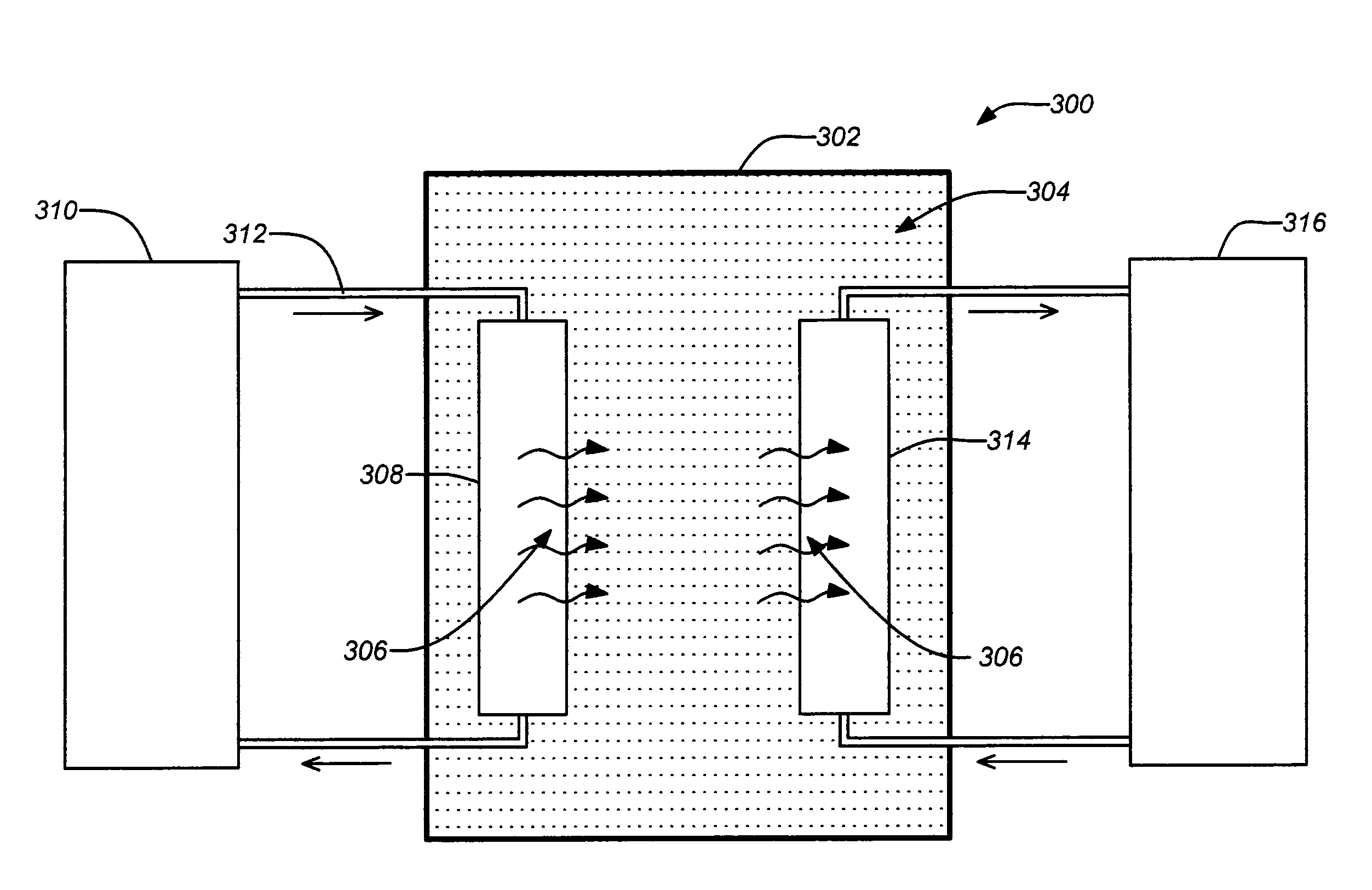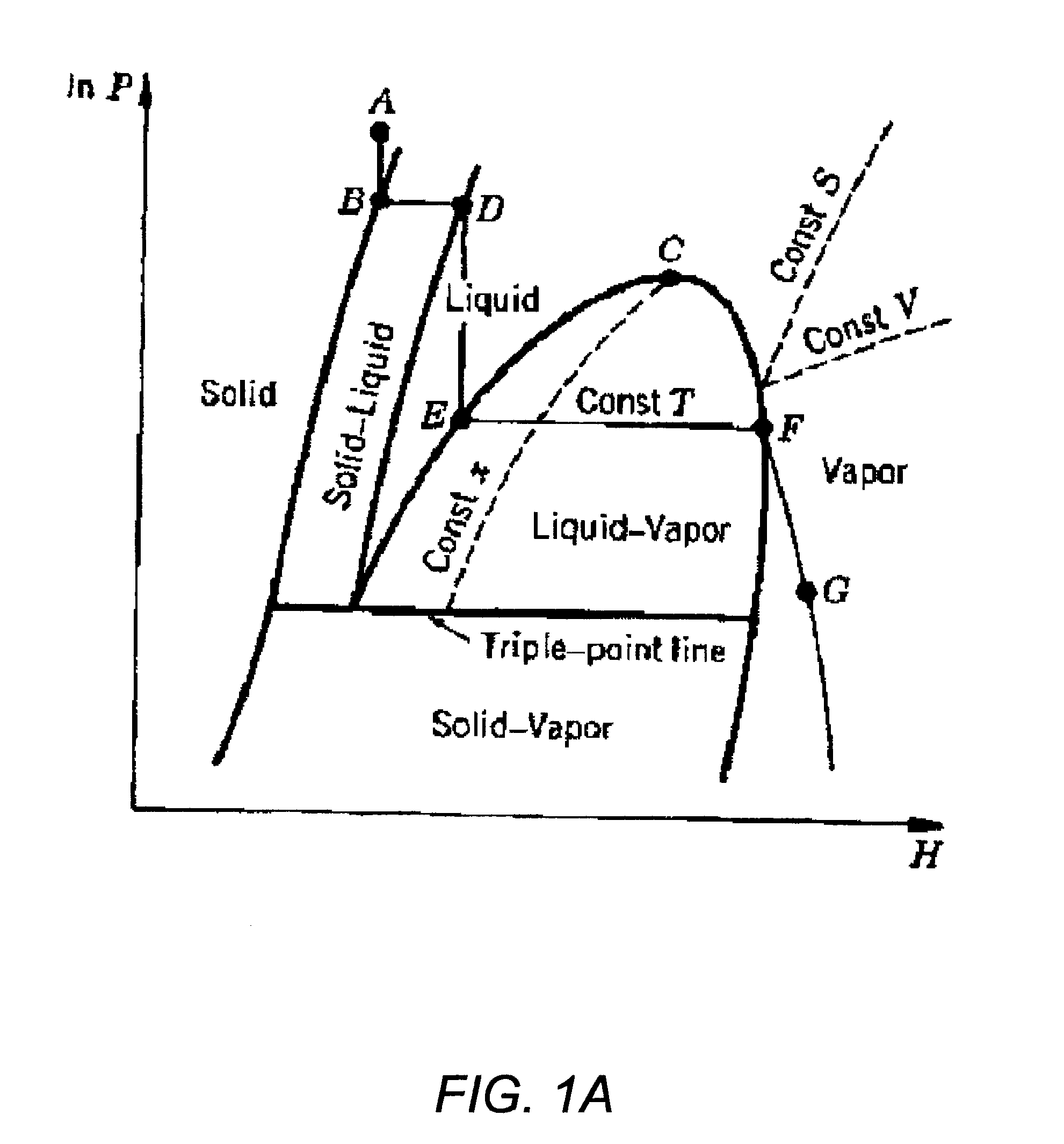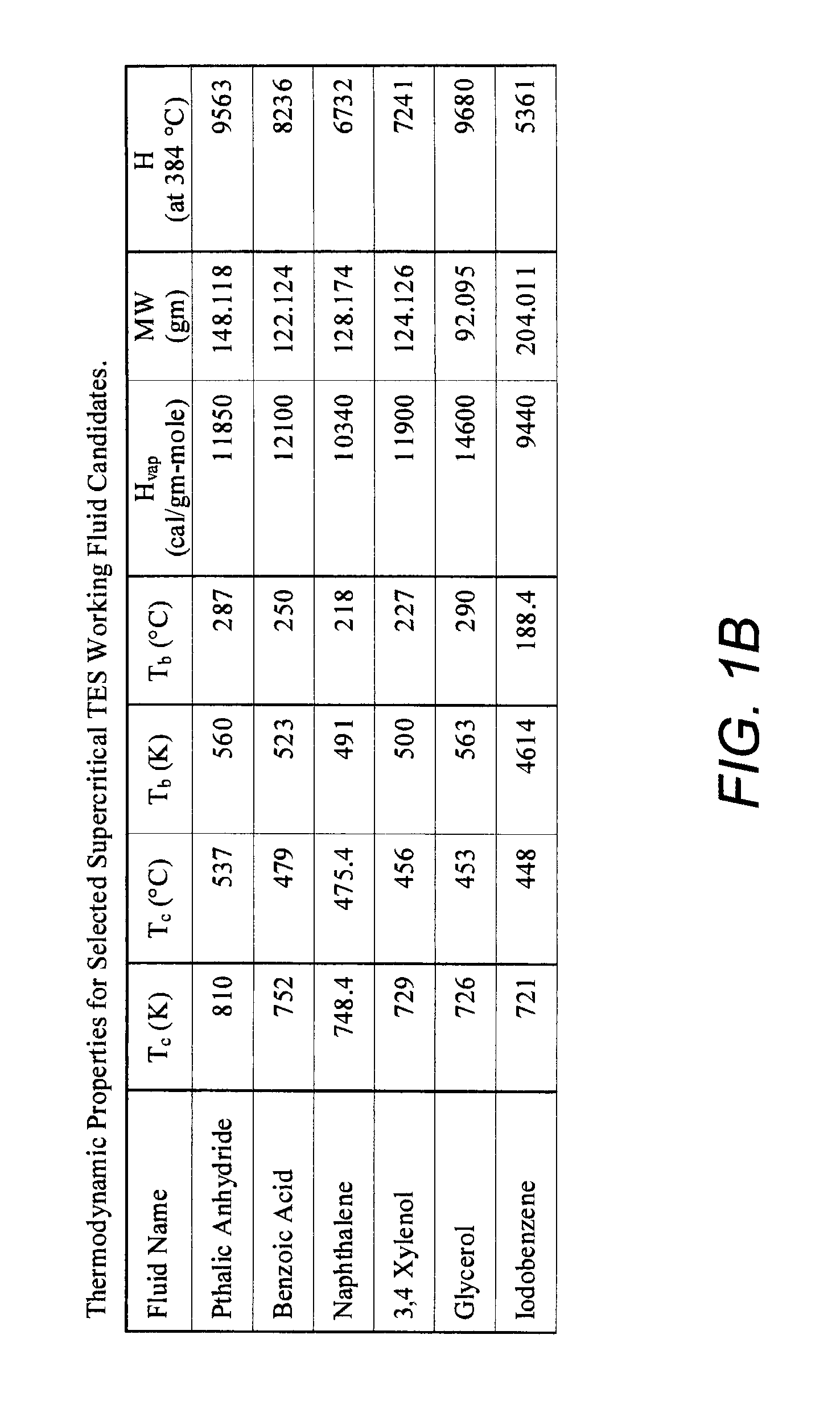Thermal energy storage using supercritical fluids
a technology of supercritical fluids and energy storage systems, applied in indirect heat exchangers, lighting and heating apparatus, chemical production, etc., can solve the problems of relatively poor thermal conductance across solid pcm regions, large storage of heat, and heat transfer characteristics of pcms, so as to reduce the required volume, high energy density storage, and compressibility high
- Summary
- Abstract
- Description
- Claims
- Application Information
AI Technical Summary
Benefits of technology
Problems solved by technology
Method used
Image
Examples
Embodiment Construction
[0034]1. Overview
[0035]A new thermal energy storage system has been proposed using pressurized supercritical fluids, which provides numerous advantages including a simpler system design, much lower fluid storage costs, improved system performance overall. Working with high temperature HTF and thermal storage yields higher system performance.
[0036]The thermal energy storage system may be described as employing latent heat storage of a supercritical fluid instead of typical phase change materials. Two fundamental thermodynamic concepts are invoked. First, by using the latent heat of liquid / vapor phase change, an efficient system is developed which will provide a constant sink / source of heat. Second, by operating the thermal energy storage system at a higher pressure, the saturation temperature is increased to operate at molten salt temperatures and above.
[0037]As previously mentioned, a thermal energy storage system may be described where a storage fluid remains in a supercritical sta...
PUM
 Login to View More
Login to View More Abstract
Description
Claims
Application Information
 Login to View More
Login to View More - R&D
- Intellectual Property
- Life Sciences
- Materials
- Tech Scout
- Unparalleled Data Quality
- Higher Quality Content
- 60% Fewer Hallucinations
Browse by: Latest US Patents, China's latest patents, Technical Efficacy Thesaurus, Application Domain, Technology Topic, Popular Technical Reports.
© 2025 PatSnap. All rights reserved.Legal|Privacy policy|Modern Slavery Act Transparency Statement|Sitemap|About US| Contact US: help@patsnap.com



